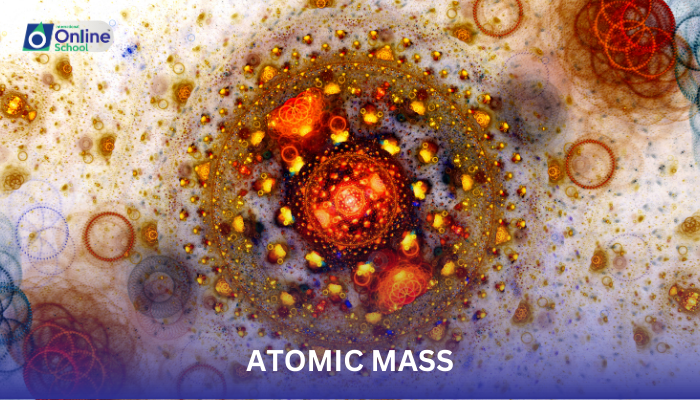
Learning Outcomes
By the end of this lesson, students will be able to:
i. Define and explain the concept of relative atomic mass and its significance in representing the masses of atoms.
ii. Understand the basis of the carbon-12 (C-12) scale, the standard for measuring relative atomic masses.
iii. Calculate relative atomic masses based on the isotopic composition of elements.
iv. Interpret relative atomic masses to make inferences about the abundance of isotopes and the average mass of atoms in an element.
v. Apply the concept of relative atomic mass to solve chemistry-related problems.
Introduction
The world of atoms is a realm of intricate structure and varying masses. Each element, the fundamental building block of matter, is characterized by a unique atomic number, representing the number of protons in its nucleus. However, the mass of an atom can vary due to the presence of different isotopes, atoms of the same element with different numbers of neutrons.
To express these variations in atomic masses in a standardized manner, scientists employ the concept of relative atomic mass. In this lesson, we delve into the realm of relative atomic mass, exploring its definition, significance, and applications.
i. Defining Relative Atomic Mass
Relative atomic mass, often denoted by the symbol Ar, is a dimensionless quantity that represents the average mass of an atom of an element relative to the mass of a reference atom.
The standard reference atom for measuring relative atomic masses is carbon-12 (C-12), an isotope of carbon with 6 protons and 6 neutrons. By definition, the relative atomic mass of C-12 is exactly 1.
The relative atomic mass of an element is calculated based on the weighted average of the masses of its isotopes, taking into account the abundance of each isotope. For instance, the relative atomic mass of chlorine (Cl) is 35.45 because it is a mixture of two isotopes, Cl-35 (75.77% abundance) and Cl-37 (24.23% abundance).
ii. Significance of Relative Atomic Mass
Relative atomic mass plays a crucial role in various aspects of chemistry:
Understanding Atomic Masses: It provides a standardized way to express and compare the masses of atoms of different elements.
Calculating Chemical Formulas: It is used to determine the molecular mass of compounds, which is essential for balancing chemical equations.
Interpreting Isotopic Composition: It reflects the average abundance of different isotopes in an element.
Calculating Relative Atomic Mass
The relative atomic mass of an element is calculated using the following formula:
Ar = (Σ (mi x Ai)) / Σ mi
where:
Ar is the relative atomic mass of the element
mi is the mass of isotope i
Ai is the abundance of isotope i as a fraction
iii. Interpreting Relative Atomic Mass
The relative atomic mass of an element provides insights into its isotopic composition and the average mass of its atoms. A higher relative atomic mass indicates a greater contribution from heavier isotopes, while a lower relative atomic mass indicates a higher proportion of lighter isotopes.
Relative atomic mass, a fundamental concept in chemistry, serves as a bridge between the microscopic world of atoms and the macroscopic world of matter. It enables scientists to express and compare the masses of atoms, calculate molecular masses, and make inferences about the isotopic composition of elements. Understanding relative atomic mass is essential for comprehending the intricacies of chemical reactions, predicting outcomes, and developing new materials.